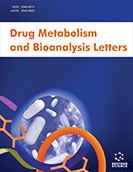
Abstract
Background: Oral bioavailability (F), which is evaluated by permeability and solubility, is one of the key parameters in drug discovery. Currently, Caco-2 and Ussing chamber are both used in the study of intestinal permeability of drugs at different stages of drug development. However, comparative research between the Ussing chamber and Caco-2 for predicting the intestinal availability data (Fa×Fg) in humans has not been reported.
Methods: In the present study, we evaluated the permeability of 22 drugs in rat intestines by Ussing chamber and compared them with the reported permeability data from Caco-2. In addition, the active transport of gabapentin was evaluated by Ussing Chamber.
Results: Intestine segments were selected by corresponding absorption site for Ussing chamber analysis. BCS Class I and II compounds were more absorbed in the duodenum and jejunum, and Class III and IV compounds were more absorbed in the ileum. Papp values in the Caco-2 model were moderately correlated with human Fa×Fg (R2=0.722), and the Papp of the rat in the Ussing chamber revealed a better correlation with human Fa×Fg (R2=0.952). In addition, we also used the Ussing chamber to identify the transporter of gabapentin, and the results showed that the active absorption of gabapentin was related to LAT1.
Conclusion: Ussing chamber combined with rat intestinal tissue would be a significant tool for predicting the intestinal absorption and metabolism of compounds with diverse physiochemical characteristics.
Graphical Abstract
[http://dx.doi.org/10.1016/S0169-409X(00)00129-0] [PMID: 11259830]
[http://dx.doi.org/10.1016/j.sbsr.2020.100357]
[http://dx.doi.org/10.1016/S0009-9236(96)90208-8] [PMID: 8988062]
[http://dx.doi.org/10.1021/jm000407e] [PMID: 11311053]
[http://dx.doi.org/10.1023/A:1016212804288] [PMID: 7617530]
[http://dx.doi.org/10.1208/s12248-009-9144-x] [PMID: 19876745]
[http://dx.doi.org/10.1021/jm970530e] [PMID: 9544199]
[http://dx.doi.org/10.2174/1568026013395010] [PMID: 11899104]
[http://dx.doi.org/10.1615/CritRevTherDrugCarrierSyst.v14.i3.20] [PMID: 9282267]
[http://dx.doi.org/10.1023/A:1020483911355] [PMID: 12425456]
[http://dx.doi.org/10.1208/s12248-013-9521-3] [PMID: 23982336]
[http://dx.doi.org/10.1016/S0169-409X(00)00128-9] [PMID: 11259831]
[http://dx.doi.org/10.1016/0378-5173(95)04204-0]
[http://dx.doi.org/10.1023/A:1018866928335] [PMID: 10227706]
[http://dx.doi.org/10.1080/00365520310003101] [PMID: 12889559]
[http://dx.doi.org/10.1016/j.ejpb.2017.09.015] [PMID: 28974435]
[http://dx.doi.org/10.1016/j.ejps.2016.10.006] [PMID: 27721045]
[http://dx.doi.org/10.1124/dmd.120.000138] [PMID: 33087448]
[http://dx.doi.org/10.1016/j.xphs.2018.10.046] [PMID: 30389567]
[http://dx.doi.org/10.1016/j.ijpharm.2016.03.063] [PMID: 27073083]
[http://dx.doi.org/10.1080/17460441.2017.1378176] [PMID: 28920464]
[http://dx.doi.org/10.1016/j.bcp.2013.03.022] [PMID: 23567998]
[http://dx.doi.org/10.1007/s11095-006-9155-6] [PMID: 17192834]
[http://dx.doi.org/10.1002/prp2.575] [PMID: 32266794]
[http://dx.doi.org/10.3390/pharmaceutics12010079] [PMID: 31963555]
[http://dx.doi.org/10.1016/j.ejps.2019.02.021] [PMID: 30797937]
[http://dx.doi.org/10.1016/j.vascn.2013.07.004] [PMID: 23916595]
[http://dx.doi.org/10.1016/j.ejpb.2016.12.027] [PMID: 28088633]
[http://dx.doi.org/10.1021/mp4000585] [PMID: 23675957]
[http://dx.doi.org/10.1152/ajpgi.00102.2009] [PMID: 19541926]
[http://dx.doi.org/10.1007/s40262-015-0310-2] [PMID: 26293617]
[http://dx.doi.org/10.1016/j.tiv.2007.02.008] [PMID: 17412555]
[http://dx.doi.org/10.1111/j.1476-5381.1995.tb13301.x] [PMID: 7780654]
[http://dx.doi.org/10.1016/j.jbc.2021.100559] [PMID: 33744282]
[http://dx.doi.org/10.1016/j.ygeno.2019.06.021] [PMID: 31226485]
[http://dx.doi.org/10.1016/j.ejps.2012.02.025] [PMID: 22418036]
[http://dx.doi.org/10.1016/j.ejps.2012.10.007] [PMID: 23103351]
[http://dx.doi.org/10.1023/A:1016284214708] [PMID: 7479568]
[http://dx.doi.org/10.1067/mcp.2000.107579] [PMID: 10945310]
[http://dx.doi.org/10.1016/j.ejps.2006.06.004] [PMID: 16876987]
[http://dx.doi.org/10.1111/j.1365-2125.2003.02053.x] [PMID: 15089813]
[http://dx.doi.org/10.1002/jps.21708] [PMID: 19230019]
[http://dx.doi.org/10.1007/s13318-022-00780-x] [PMID: 35733077]



























